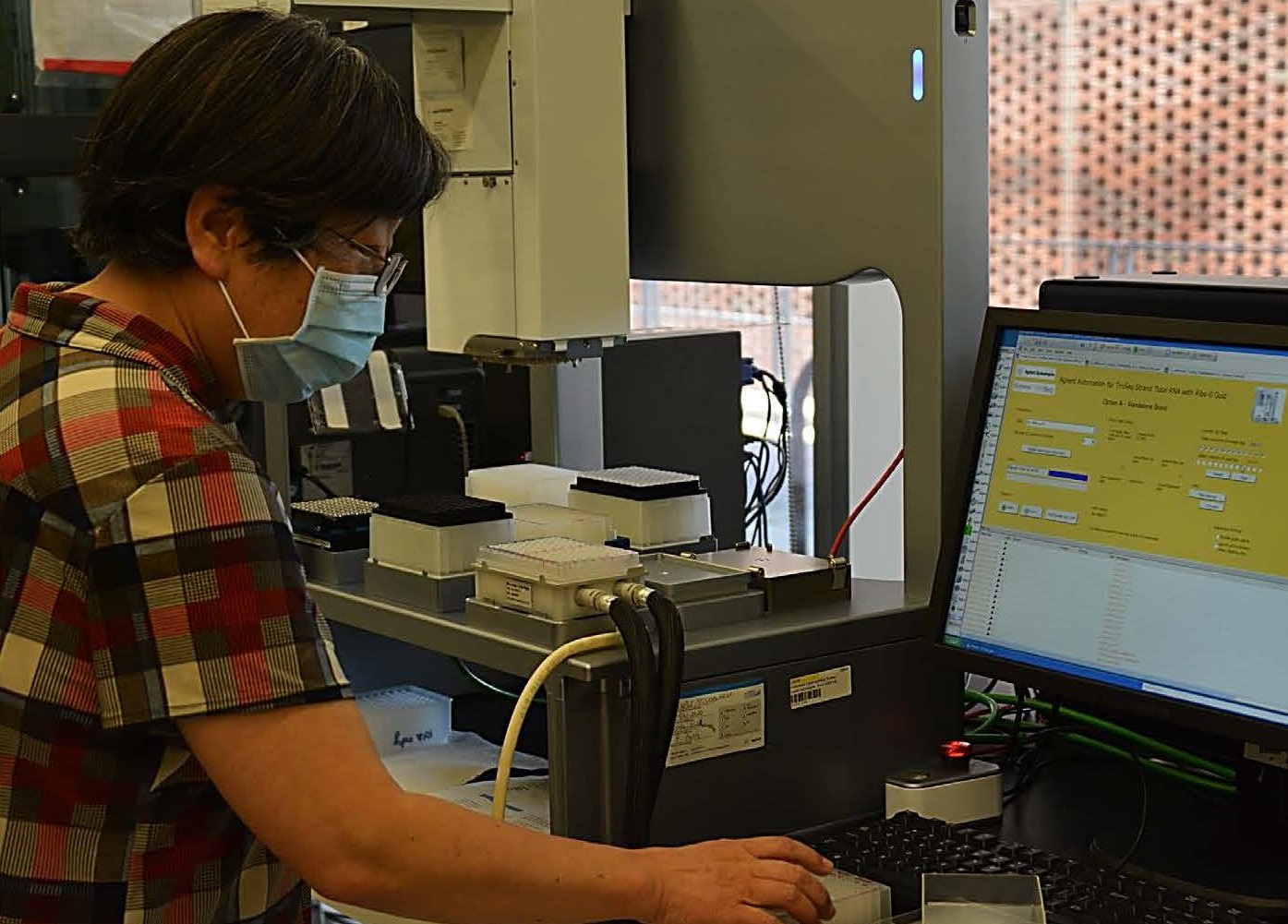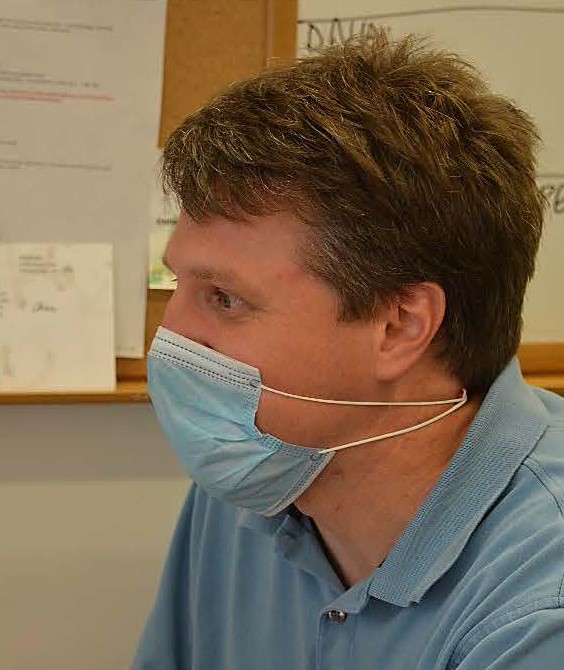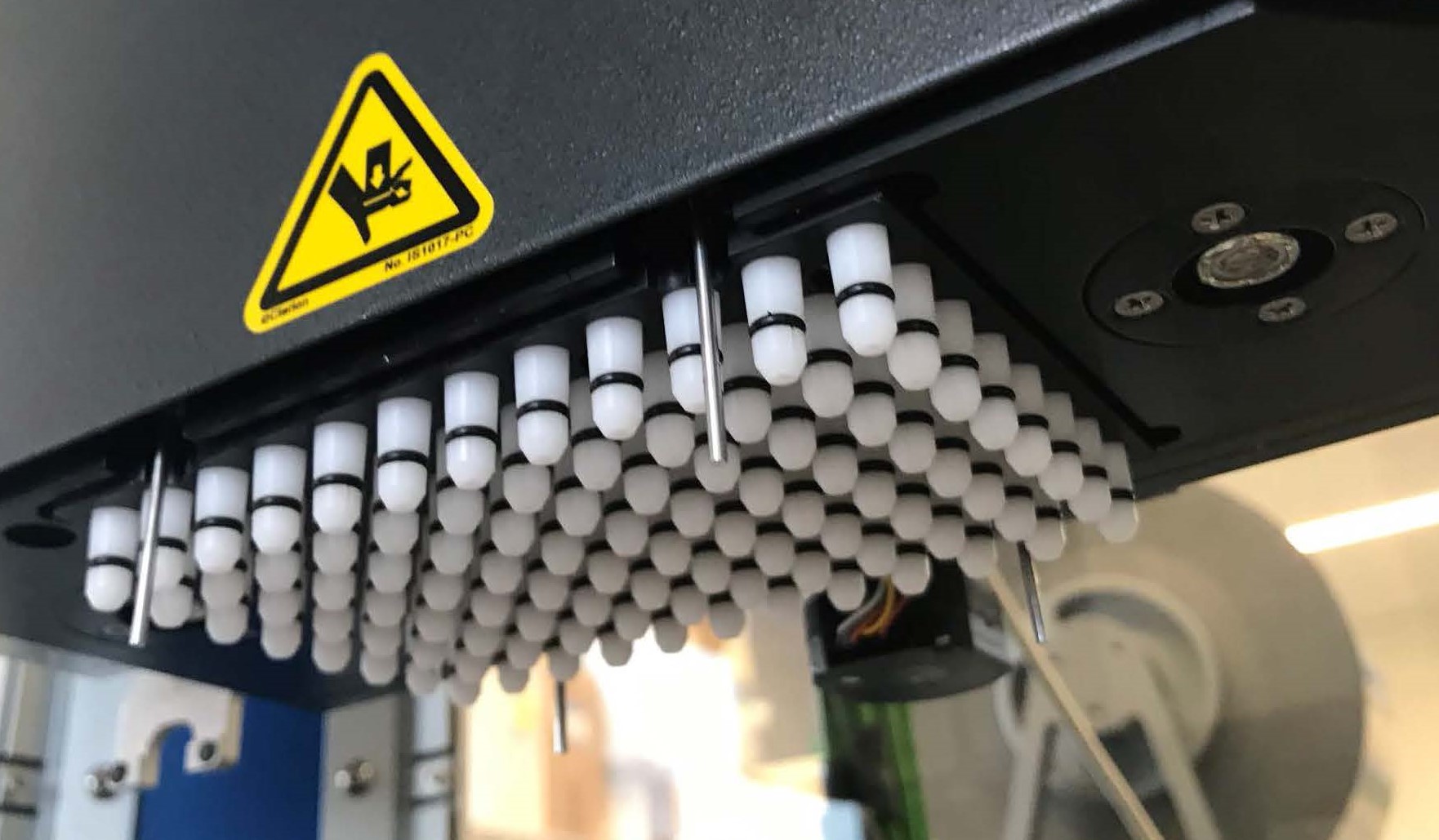RNA Library Preparation and Sequencing
Total RNA-seq
 Whole-transcriptome analysis with total RNA sequencing (RNA-Seq) detects coding plus multiple forms of noncoding RNA. Total RNA-Seq can accurately measure gene and transcript abundance and identify known and novel features of the transcriptome.
Whole-transcriptome analysis with total RNA sequencing (RNA-Seq) detects coding plus multiple forms of noncoding RNA. Total RNA-Seq can accurately measure gene and transcript abundance and identify known and novel features of the transcriptome.
For library preparation recommendations based on species, please see the below chart for details.
| Species | Library Preparation |
| Human/Mouse/Rat | TruSeq Ribo-Zero-Gold and Kapa Ribo-Erase |
| Individual species depletions |
|
For low input material, the HTSF typically recommends Tecan Genomics SOLO or Trio, which can be done with any depletion for ribosomal depletion.
General sequencing platform and pooling recommendations can be found below:
| Service | Samples per Pool | Platform | Cycles |
| Total RNAseq | 24 | NovaSeq S4 | 2×150 |
| 96 | 2×50 | ||
| 38 | NovaSeq S2 | ||
| 16 | NovaSeq S1 | ||
| 8 | NovaSeq SP | ||
| 3 | HiSeq 4000 | ||
| 2 |
mRNA-Seq
 mRNA sequencing (mRNA-Seq) has rapidly become the method of choice for analyzing the transcriptomes of disease states, of biological processes, and across a wide range of study designs. mRNA-Seq can identify both known and novel transcript isoforms, gene fusions, and other features as well as allele-specific expression. mRNA-Seq delivers a complete view of the coding transcriptome that is not restricted by the filter of prior knowledge.
mRNA sequencing (mRNA-Seq) has rapidly become the method of choice for analyzing the transcriptomes of disease states, of biological processes, and across a wide range of study designs. mRNA-Seq can identify both known and novel transcript isoforms, gene fusions, and other features as well as allele-specific expression. mRNA-Seq delivers a complete view of the coding transcriptome that is not restricted by the filter of prior knowledge.
There are a variety of approaches to mRNA sequencing. Therefore, the best approach will depend on your needs.
 Typically, the HTSF recommends the following library preparation methods:
Typically, the HTSF recommends the following library preparation methods:
- Kapa mRNA stranded
- Takara Smarter + Nextera XT for low input material
- Nugen mRNA can also be done by request.
Sequencing and pooling recommendations can be found in the table below:
| Services | Samples per Pool | Platform | Cycles |
| mRNA-Seq | 198 | NovaSeq S4 | 2×50 |
| 76 | NovaSeq S2 | ||
| 32 | NovaSeq S1 | ||
| 16 | NovaSeq SP | ||
| 6 | HiSeq 4000 | ||
| 4 |
Small RNA sequencing
 MicroRNA sequencing (miRNA-seq), a type of RNA-Seq, is the use of next-generation sequencing to sequence microRNAs, also called miRNAs. miRNA-seq differs from other forms of RNA-seq in that input material is typically enriched for small RNAs. miRNA-seq allows researchers to examine tissue-specific expression patterns, disease associations, and isoforms of miRNAs, and to discover previously uncharacterized miRNAs.
MicroRNA sequencing (miRNA-seq), a type of RNA-Seq, is the use of next-generation sequencing to sequence microRNAs, also called miRNAs. miRNA-seq differs from other forms of RNA-seq in that input material is typically enriched for small RNAs. miRNA-seq allows researchers to examine tissue-specific expression patterns, disease associations, and isoforms of miRNAs, and to discover previously uncharacterized miRNAs.
Like other miRNA profiling technologies, miRNA-Seq has both advantages (sequence-independence, coverage) and disadvantages (high cost, infrastructure requirements, run length, and potential artifacts).
Preferred library preparation kits for this service include:
- BioO NextFlex
Sequencing and pooling recommendations can be found in the table below:
| Service | Samples per Pool | Platform | Cycle |
| Small RNA-seq | 48 | NextSeq 2000 | Single End/50x |
Relevant RNA Services Forms and Guides
HTSF Sample Preparation Requirement GuideIllumina Platform Comparison and Specification Table
NovaSeq Requirements
NovaSeq White Paper
Approved Containers Information